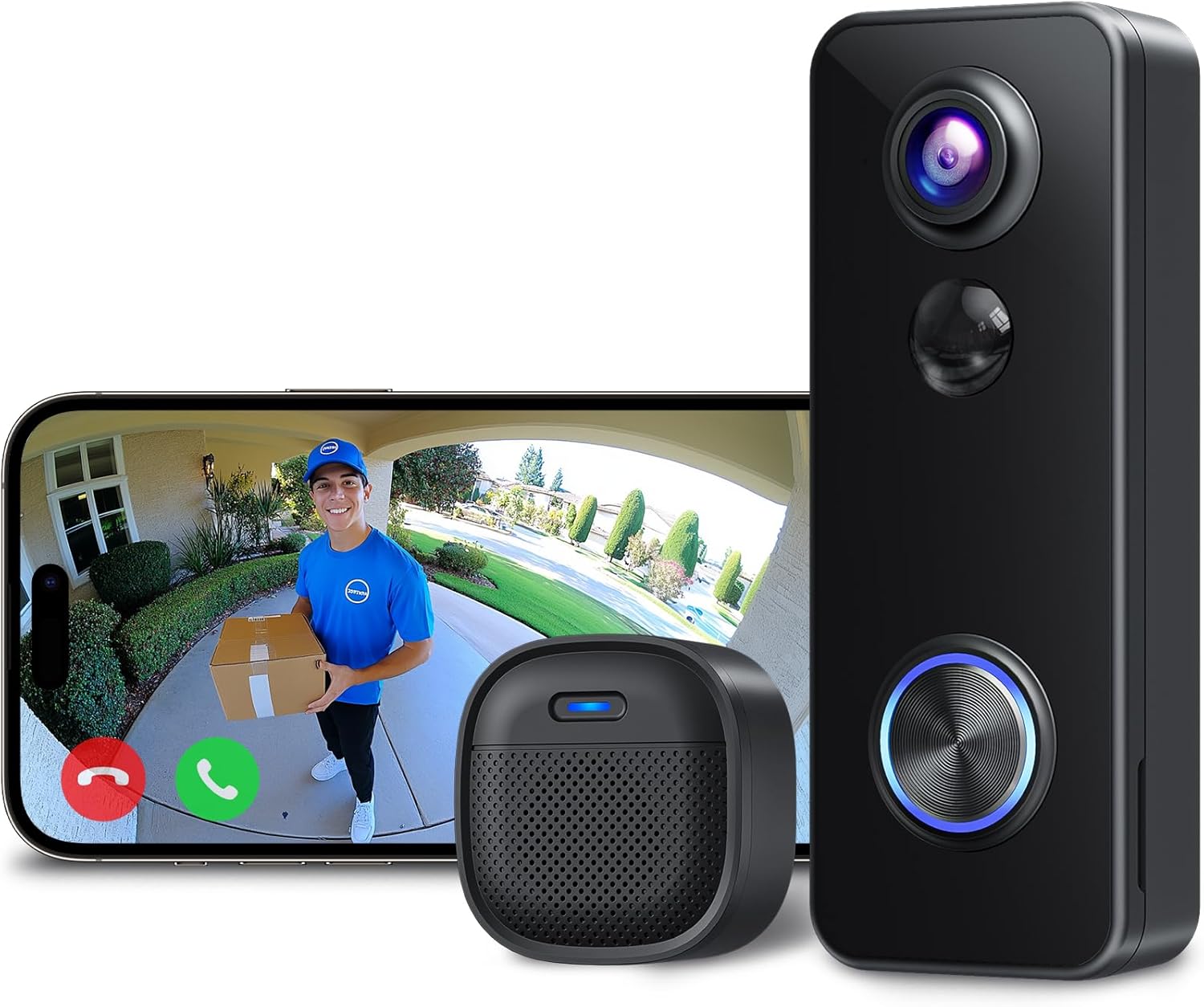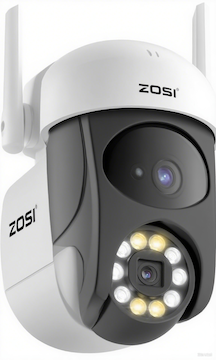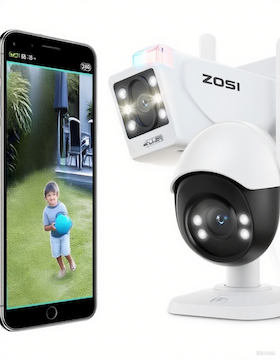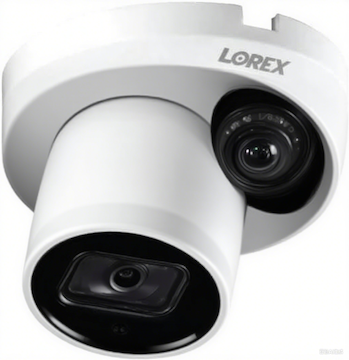Mastering Night Vision in Security Cameras: A Comprehensive Guide

1. Night Vision Technology Types in Security Cameras
• IR Night Vision: This is the workhorse of night vision—think of it as the reliable pickup truck of security tech. Most cameras use IR LEDs that shoot out invisible infrared light, like a silent flashlight. I remember setting up a camera in my buddy’s warehouse: even with the lights off, the footage showed forklifts moving in crisp black and white. It’s perfect for pitch-dark spots—no ambient light needed, just point and shoot.
• Starlight Vision: Picture this as night vision’s cooler, more sensitive sibling. I saw this in action on a dimly lit street where regular IR cameras turned everything gray. Starlight models use supersensitive sensors and wide lenses, almost like having night-vision goggles that let you see colors. One neighbor’s camera picked up a burglar’s red hoodie clear as day, even under a faint streetlight.
• Ultra-Starlight Vision: This is the top-tier sports car of night vision. I tested one in a near-black garage (seriously, no windows, no lights) and it still showed details. How? It uses AI noise reduction that’s like a magic eraser for grainy footage. Some models work in light as low as 0.001 lux—that’s darker than a moonless night in the woods.
2.Key Performance Parameters of Night Vision in Security Cameras
• Minimum Illumination (Lux): Let’s break this down: lux is like the volume knob for light. A standard IR camera might need 0.1 lux (think a dim porch light), but ultra-starlight can rock 0.001 lux (imagine a candle from 50 feet away). I once compared two cameras: one with 0.5 lux turned my backyard into a blurry mess at midnight, while the 0.01 lux model showed my dog chasing a raccoon.
• IR Distance: This is how far the camera’s "night vision flashlight" reaches. For a big yard, get one with 50+ meters—like a spotlight that covers a football field. My brother-in-law uses a 100m IR camera for his farm, and it picks up deer in the far pasture.
• Noise Reduction: Ever seen old TVs with snowy static? That’s what bad night vision looks like. Good cameras use DNR (like a spell checker for pixels) and OIS (think steady hands for the lens). I’ve tested a camera that turned a windy, dark night from "snowstorm" to crystal clear.
• Sensor Size and Lens Aperture: Bigger sensors are like bigger buckets catching more light. A 1/1.8-inch sensor vs a 1/2.7-inch? The difference is like drinking from a firehose vs a straw. Wide apertures (F1.4) let in more light—imagine opening a window vs a crack during a sunset.
3.Real-World Applications and Problem-Solving of Night Vision
• Home Security: My neighbor had a camera that sent alerts when someone walked up his driveway at 2 AM. The starlight vision showed the delivery guy dropping a package, but also caught a thief trying his door last month. Pro tip: get one with human detection—no more alerts for stray cats.
• Commercial Settings: At my old job’s warehouse, we had IR cameras with de-fogging modes for rainy nights. The high-power LEDs lit up the loading dock like day, and multi-camera setups meant no dark corners. Once, a delivery truck hit a gate at 3 AM—footage was so clear, we saw the license plate.
• Challenges and Solutions: Regular IR can’t tell red from blue, which mattered when a burglar wore a red mask (starlight camera saved the day). For blinding headlights? WDR technology is like squinting in bright sun—it balances light and dark. I tested a camera that turned car lights into soft glows instead of white-outs.
4.In-Depth Buying Tips for Security Cameras with Effective Night Vision
1. Budget-Friendly Options
When working with a limited budget, it's crucial to prioritize essential features. Look for security cameras that offer an IR distance of at least 30 meters, ensuring a decent coverage area for most residential settings. A minimum illumination of around 0.1 lux is also advisable, as it allows the camera to function adequately in low-light conditions.
The ZOSI C289 is an excellent example in this category. Priced affordably, it provides reliable IR night vision, allowing you to monitor your property during the night without breaking the bank. Its user-friendly interface and compatibility with popular smart home systems add extra value, making it a popular choice among budget-conscious consumers.

2. High-End Home Use
For homeowners seeking top-notch night vision capabilities, cameras that combine starlight vision with advanced features like Wide Dynamic Range (WDR) technology are the way to go. The ZOSI C298 Max, for instance, excels in this regard. Its starlight vision technology enables it to capture detailed color footage even in dimly lit environments, such as a backyard with only a small porch light on.

3. Commercial Applications
Commercial environments demand robust and reliable night vision security cameras due to their large areas and potential high-risk nature. Ultra-starlight cameras with Power over Ethernet (POE) capabilities are highly recommended. The Lorex E842, for example, is designed to meet these demanding requirements.

With its ultra-starlight vision, it can provide clear footage in extremely low light conditions, which is essential for monitoring large warehouses or parking lots overnight. The POE feature simplifies installation by allowing power and data transmission through a single cable, reducing setup complexity and costs. Moreover, features like high-resolution imaging, long-term recording capabilities, and remote access make it a staple in commercial security setups.
5.Additional Considerations
• Brand Reputation and Reviews: Let me tell you from experience—brand matters. I once bought a no-name camera because it was cheap, and guess what? The night vision turned my backyard into a grainy mess, and the company never updated the firmware. Now I always check r/SecurityCameras before buying. Look for brands that drop regular updates—like Eufy, which just added a human detection feature via firmware last month. Customer support is key too: when my Arlo camera acted up, their team walked me through a fix in 10 minutes.
• Compatibility: This is like making sure your phone charges with any charger. I had a client who bought a 4K camera that didn’t talk to his old NVR—total headache. Now I recommend checking if the camera plays nice with your ecosystem. For example, if you have a Ring doorbell, get a camera that works with Ring’s app. Some cameras even sync with Alexa, so you can say, "Show me the backyard camera," and it pops up on your Echo Show.
• Legal and Privacy Considerations: Here’s a story: my neighbor got a cease-and-desist because his camera pointed at the sidewalk. Laws vary, but in most places, you can’t record public areas without a sign. Pro tip: use cameras with privacy zones. My Blink camera lets me black out the part of the frame that shows my neighbor’s patio—just draw a box in the app. It’s like putting a curtain over the parts you shouldn’t see.
In the end, nailing night vision is like hiring a security guard who never blinks. I’ve seen too many people skimp on this and end up with footage that’s useless after dark. Whether you’re protecting a home or a business, take 30 minutes to map out your needs: How dark is your yard at night? Do you need color footage? Can your router handle 4K? Answering these questions helps you pick a camera that’ll actually catch the bad guys—not just collect dust. Trust me, the right night vision is the difference between sleeping soundly and wondering "what if."
RELATD 1: Top-Rated Home Security Systems of 2025: Trusted Picks by Our Experts
RELATD 2: Build Your Own Smart Home Security System : A Complete Beginner's Guide
REALTD 3: Voice Assistant Showdown: Who is Your Best Smart Home Companion?

